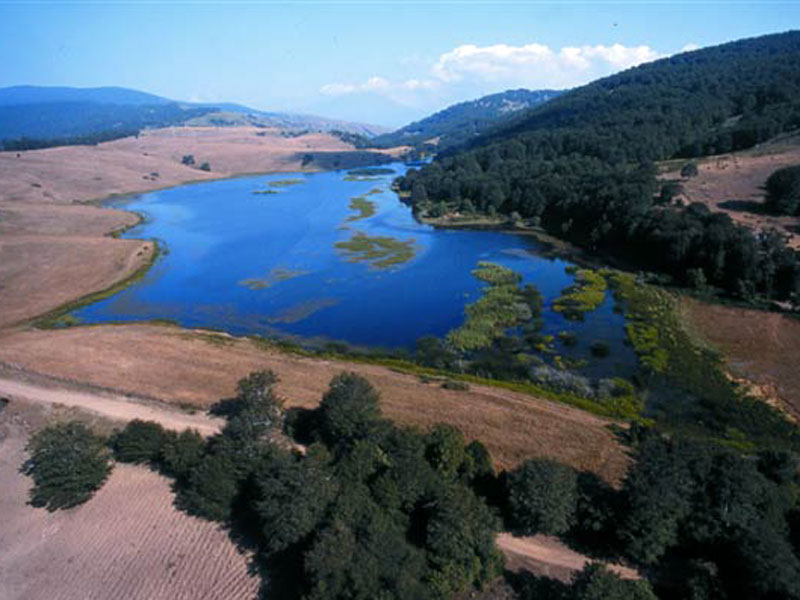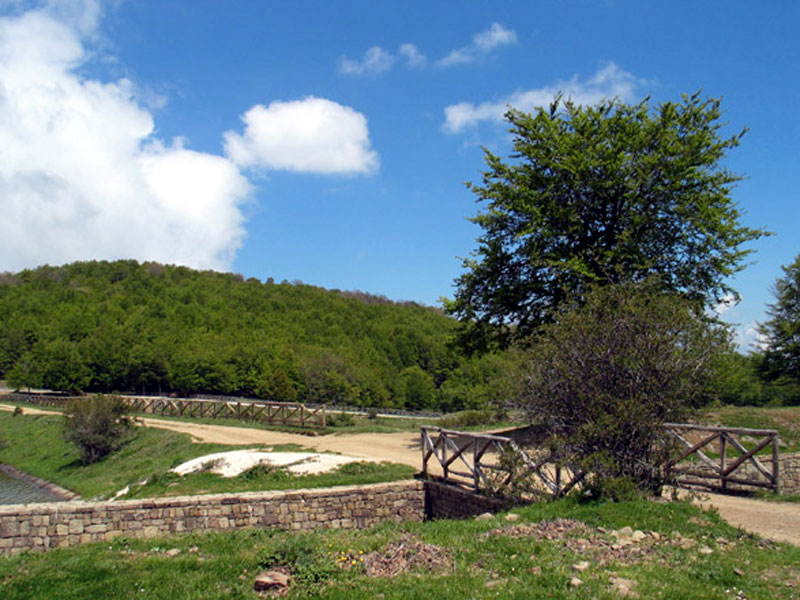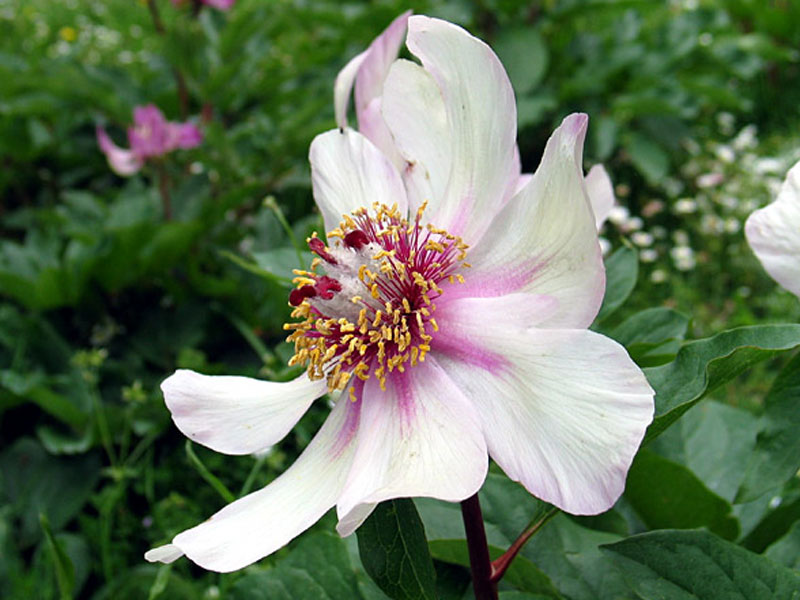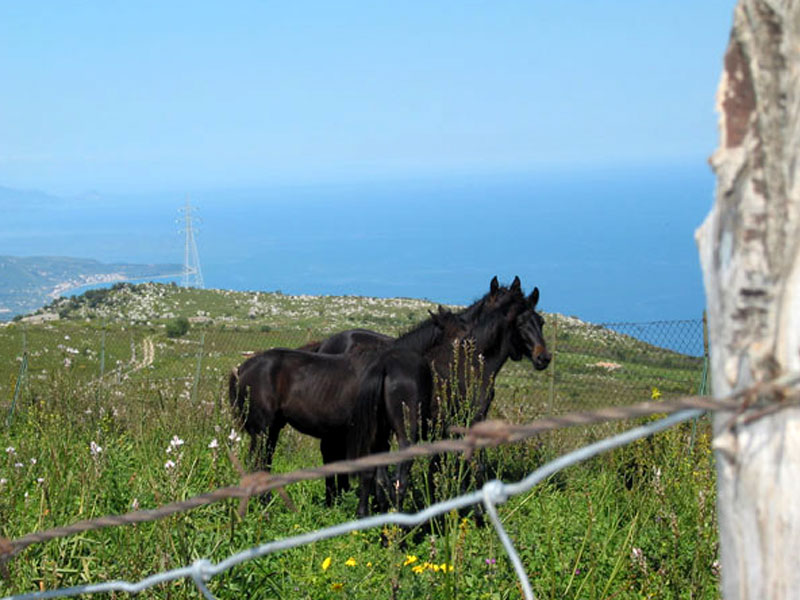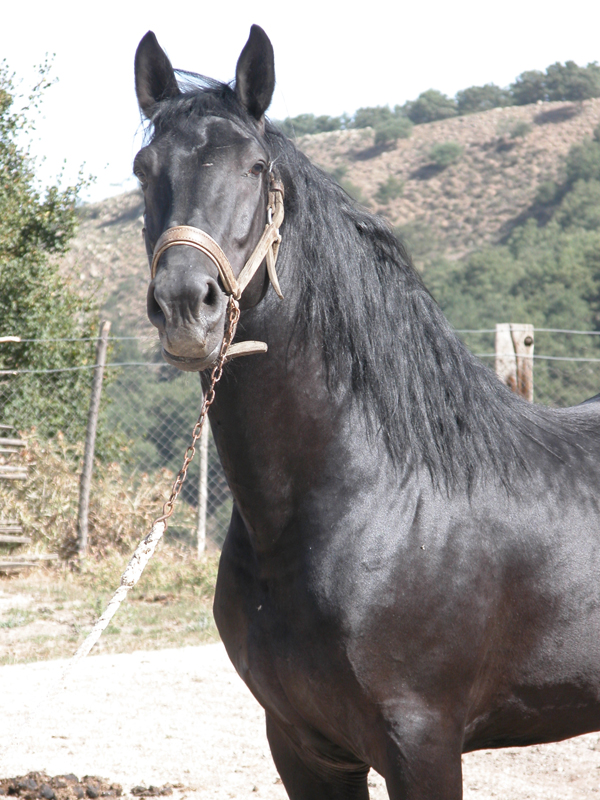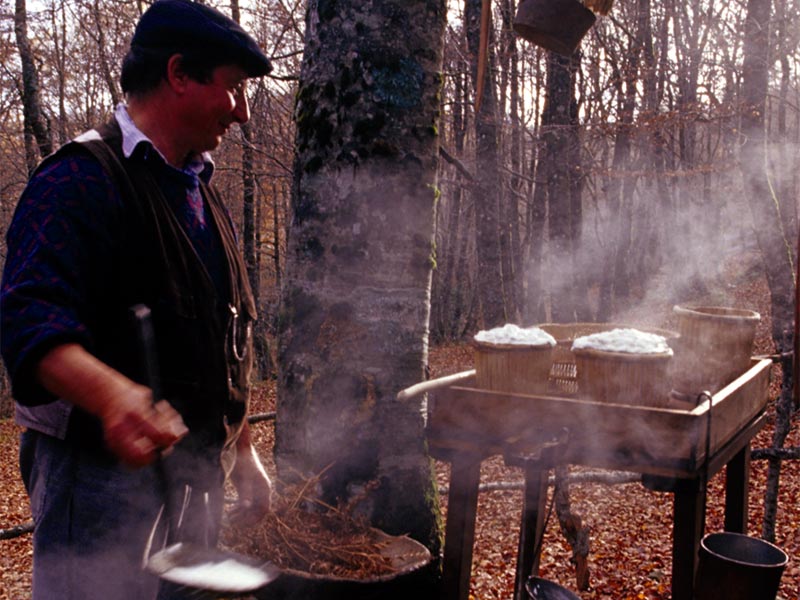Protected Area
Identity Card
- Land Surface Area: 88'887.37 ha
- Protected flora: 38 species (Italian text)
- Protected wildlife: 84 species (Italian text)
- Habitats: 26 types (Italian text)
- Regions: Sicilia
- Provinces: Catania, Enna, Messina
- Municipalities: Acquedolci, Alcara li Fusi, Bronte, Capizzi, Caronia, Cerami, Cesarò, Floresta, Galati Mamertino, Longi, Maniace, Militello Rosmarino, Mistretta, Raccuja, Randazzo, San Fratello, San Marco d'Alunzio, San Teodoro, Sant'Agata di Militello, Santa Domenica Vittoria, Santo Stefano di Camastra, Tortorici, Troina, Ucria
- Establishment Measures: DARTA 560-11 04/08/1993 - DARTA 67/GAB 08/03/2005, DARTA 13/GAB 3/3/2010
- PA Official List: EUAP0226
- Park Authority: Ente Parco Naturale Regionale dei Nebrodi
![]() The Statute of the Park (PDF - 52Kb)
The Statute of the Park (PDF - 52Kb)
The Landscape
Nebrodi Mountains, together with Madonie in the west and Peloritani in the east, form Appennino siculo (Sicilian Apennines). They face in the north the Tyrrheanian Sea, while their southern border is marked by the Etna, in particular by the river Alcantara and by the high course of the Simeto. The main elements characterizing the natural landscape of Nebrodi are the asymmetry of each slope, the different shaping of the relief, the very rich vegetation, and the wetlands. The essential peculiarity of the orographic situation is the gentleness of the relief deriving from the presence of wide banks of clayey-arenaceous rocks: the peaks, reaching with Mt. Soro the maximum height of 1,847 meters a.s.l., have rounded slopes and open in wide valleys crossed by many rivers flowing into the Tyrrheanian Sea. Where the limestone prevail, the landscape presents dolomitic aspects, with irregular profiles and harsh forms with many fissures. It is the case of Monte San Fratello and, above all, Rocche del Crasto (1,315 meters a.s.l).
Finally, it is important to underline the widespread process of progressive acculturation of the Park's territory, which led throughout the centuries to the transformation of Nebrodi from a natural to a cultural landscape.
Further information (Italian text)
Vegetation
The Arabians defined the Nebrodi as "an island within the island": the
reason will become clear to the visitor the first time he/she will set
about a visit to this surprising territory: its richness in charming
woods, high mountain green pastures, silent lakes, and flowing streams
clashes with the more common image of a dry and sunburnt Sicily. If
you leave the coast and you climb the mountains, it is possible to
immediately recognize precise vegetational levels depending not only on
the altitude distribution but also on the singular physical factors
that, together with temperature and abundant rain and snow, determine
favorable ecological conditions. The Mediterranean level (from the
sea-level up to 600-800 meters) is characterized by the typical
evergreen Mediterranean maquis, where the Spurge, the Myrtle, the
Lentisk, and the Broom dominate and where you can find narrow leaf
arboreal elements like the Strawberry Tree, the Cork Oak and the Ilex.
The cork plantation (interesting formations can be mainly found in the
territory of Caronia) is present in its original state when the climate
and the soil are favorable; however, it mainly appears together with
other species like the Ilex and the Downy oak with a thick underwood.
Above the 800 meters of height and up to the 1,200-1,400 meters a.s.l.,
there is the supramediterranean level, where the deciduous oaks grow.
Among the several species, we quote the widespread Downy oak,
Sessile oak, Quercus gussonei,
which form more or less large groups depending on the geological
substrata and the exposure of the slopes. The Turkey oak is also
widespread; it dominates in the coolest areas, especially with a north exposure.
Above the 1,200-1,400 meters of height, on
the mountain-Mediterranean level, there are the beech woods, marvellous
wood formations covering the whole ridge of Nebrodi for more than
10,000 hectares and characterizing environments of great value for
their naturalistic aspects and their landscape. At the highest
altitudes, the Beech is almost the only one growing species: only some
rare specimens of Sycamore maple, Maple, and Ash tree are present.
Among the species of the undergrowth there are the Holly, the
Butcher's-broom, the Hawthorn, the Daphne, and the Yew, a relict
species surviving in very localized microclimatic conditions.
Fauna
If in the past they were the kingdom of yearlings, (as well as of
fallow deer, bears, and roe deer), Nebrodi (whose name derives from
the Greek nebros, meaning yearling) still are the richest
part of Sicily in fauna, despite the progressive environmental
impoverishment. The last wolves were killed at the end of the 1920s and
the bearded vultures, which flew above Rocche del
Crasto, disappeared at the beginning of the 60s because of the poisoned
bites scattered over the territory to kill foxes. Thanks to its great
environmental variety, Nebrodi Park houses rich and
complex wildlife communities: there are several small mammals, reptiles
and amphibians, many species of nesting and migratory birds, a huge
number of invertebrates. The first group includes the Porcupine (Hystrix cristata), the Wildcat (Felis sylvestris), and the Marten (Martes martes), all very rare species; among the reptiles there are the Hermann's tortoise (Testudo hermanni) and in particular, the European pond turtle (Emys orbicularis); finally, the amphibians include the Painted frog (Discoglossus pictus) and the Edible frog (Rana esculenta).
In the Nebrodi, about 150 species of birds have been classified; among
them there are some very interesting endemic species, like the Sicilian Marsh
tit (Parus palustris siculus) and the Sicilian Long-tailed tit (Aegithalos caudatus siculus). The open areas at the edge of the woods are populated by many birds of prey, like the Buzzard (Buteo buteo), the Kestrel (Falco tinnunculus), the Lanner (Falco biarmicus), the Red kite (Milvus milvus), and the Peregrine (Falco peregrinus), while the harsh rocky areas rich in fissures of Rocche del Crasto are the kingdom of the Golden eagle (Aquila chrysaetos). The Little grebe (Podiceps ruficollis), the Coot (Fulica atra), the Grey wagtail (Motacilla cinerea), the Dipper (Cinclus cinclus), and the Kingfisher (Alcedo atthis) prefer the wetlands, while in the pasture zones it is not difficult to sight the rare Sicilian Rock partridge (Alectoris graeca whitakeri), the unmistakable erectile tuft of the Hoopoe (Upupa epops), and the powerful flight of the Raven (Corvus corax). Among the migratory avifauna, the Black-winged stilt (Himantopus himantopus) and the Grey heron (Ardea cinerea)
are worth a mention. The invertebrate fauna is very rich. Recent
researches have led to surprising results: out of the 600 registered
species concerning a small part of the existing fauna, 100 are new in
Sicily, 25 are new in Italy, and 22 are new to science. Among the most
relevant forms from the point of view of the landscape,
butterflies (over 70 species) and Carabids (over 120
species) are worth a mention.
Moreover, within the territory of the Park there are many specimens of Sanfratellano horses; native to these mountains, they are a precious breed for their characteristic features and their limited number.
It is the horse of Nebrodi, which has become the object of
important scientific studies in the last decades and more and more
relevant among the horse breeds.
Local Handicrafts
The several local handicrafts reflect the millenary civilization of the farmers and of the shepherds of Nebrodi. Handmade embroidery for tableclothes and sheets, rush or reed baskets, wooden tools for agricultural uses, stone and wrought iron working, production of colored mats and carpets ("pizzare") with ancient looms, and production of valuable pieces of pottery: they are all clear evidences of the industry and imagination of the population of the Nebrodi. Among the alimentary products, the dairy production is the most important one: the sweet or spicy "canestrato", the tasty "pecorino", the perfumed "provola", and the delicate "ricotta" cheese are still nowadays made by the expert hands of the shepherds. The charcuterie obtained from the meat of the Nebrodi black swine is very well-known; the productions of olive oil, honey, hazelnuts, pistachio nuts, and berries are valuable; the preserves made with tomatoes, mushrooms, and aubergines are very tasty; the sweets are very appreciated ("pastareale", "chiacchiere", "ramette", "crispelle", "latte fritto", "giammelle", "pasta di mandorle"). The cuisine is simple and essential and you can experience ancient tastes (handmade "maccheroni", "castrato alla brace", "capretto al forno") in the characteristic local restaurants called "barracche".
The Signs of History
An environment characterized by considerable natural features, Nebrodi preserve
within their territory the signs of the millenary action of man,
connoting themselves for the unceasing interaction between nature and
civilization, as a cultural landscape.
The presence of man on Nebrodi is documented since very ancient times.


